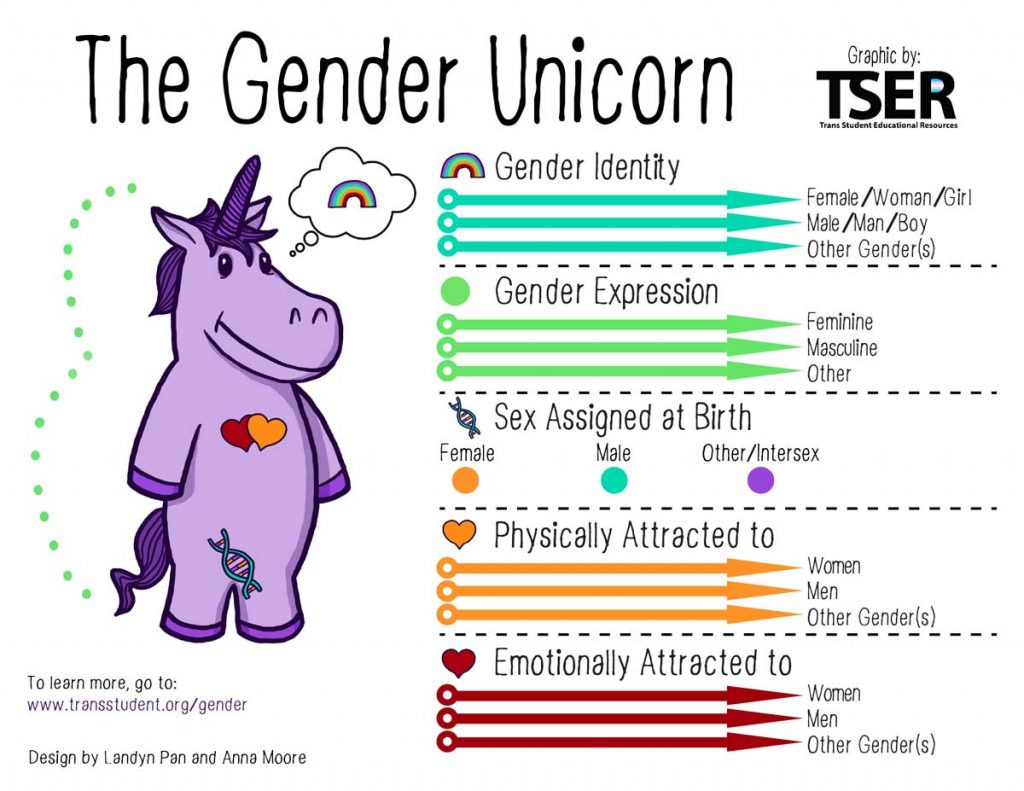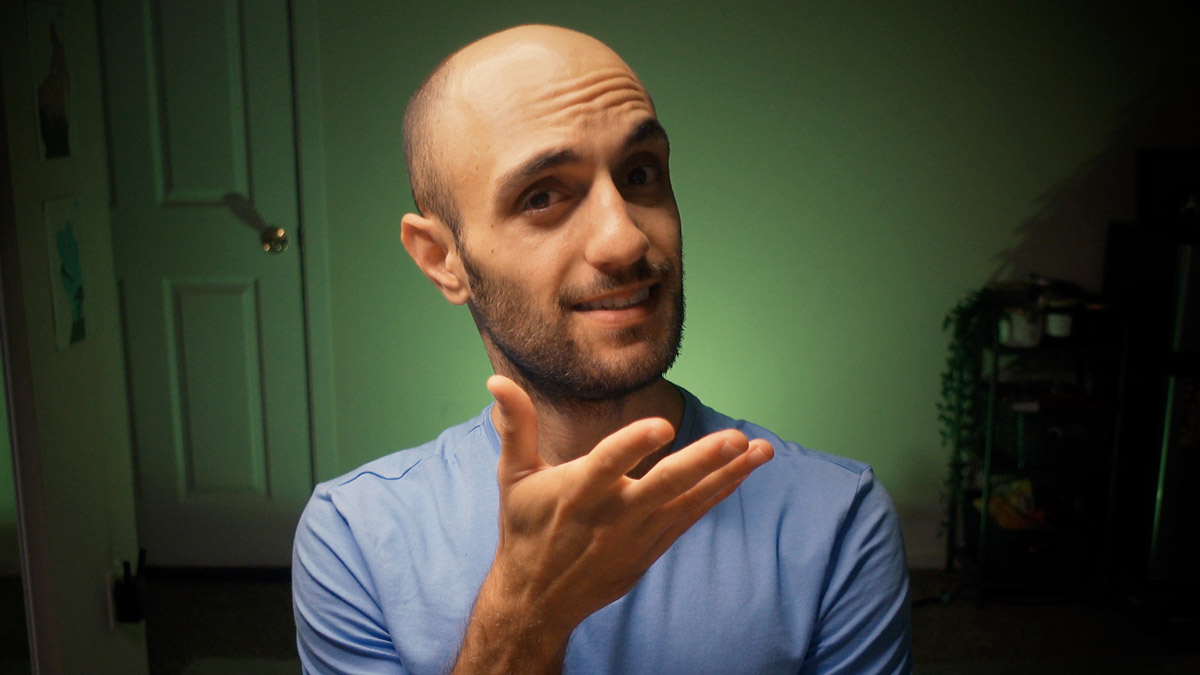Gay autistics exist, and we need a name
As a gay autistic, I wasn’t really surprised when I learned that gender identity and sexuality happen to be more diverse among autistic people.1 2 3 4 5 6 7 8 9
What really surprised me, however, was the fact that people like me didn’t yet have a name.
To explain: when you argue that male/man and female/woman occupy two points on the far ends of gender expression, you exclude other identities that may not entirely exist between these two points.
For example, intersex people might feel their sex characteristics are outside of existing categories of male or female.
One alternative to the spectrum model created by the organization Trans Student Educational Resources is the gender unicorn model.
The unicorn model is a lot more open-ended than the spectrum model when it comes to defining gender, sex, and physical and emotional attraction.
The five categories used in the unicorn model are gender identity, gender expression, the sex one assigned at birth, whom you are physically attracted to, and whom you are emotionally attracted to.
So rather than describing people like us as being on two spectrums, I’m going to roll with the term “spectrum unicorn”.
I think using this label can be a great way to identify those of us who are both autistic and LGBTQI+. It also opens the conversation to exploring some of the unique challenges we might face.
The theory of intersectionality is all about, well, intersections—not of traffic, but our identities.
But let’s say we use the traffic metaphor. In this case, the cars are our individual identities and intersections the contexts that define how they interact.
For instance, as someone who is gay and autistic, I sometimes felt stigmatized and oppressed on two fronts by wider society. This means I experience double the minority stresses.

Growing up, I was mocked for both my interests as a gay boy and for my autistic behaviors.
And even within the LGBTQI+ community, I have felt excluded and marginalized for being autistic.
For instance, as someone who has sensory sensitivities, gay nightclubs, and circuit parties are incredibly overwhelming and thus unpleasant.
This means therefore I can’t easily participate in some aspects of mainstream gay culture, which reflects the ableism of wider society.
Conflicts between LGBTQI+ and autistic identities are a pretty big topic, and one I plan to explore in a later post. But if you at all relate to anything I’ve said today, let me know in the comments.
Do you identify as autistic and LGBTQI+? What are some of the challenges you’ve faced due to these identities? Have you experienced conflicts between them?
Essy Knopf is a therapist who likes to explore what it means to be neurodivergent and queer. Subscribe to get all new posts sent directly to your inbox.
- Dewinter, J., De Graaf, H., & Begeer, S. (2017). Sexual Orientation, Gender Identity, and Romantic Relationships in Adolescents and Adults with Autism Spectrum Disorder. Journal of autism and developmental disorders, 47(9), 2927–2934. https://doi.org/10.1007/s10803-017-3199-9
- George, R., & Stokes, M. A. (2018). Sexual Orientation in Autism Spectrum Disorder. Autism research: official journal of the International Society for Autism Research, 11(1), 133–141. https://doi.org/10.1002/aur.1892
- Nabbijohn, A. N., van der Miesen, A., Santarossa, A., Peragine, D., de Vries, A., Popma, A., Lai, M. C., & VanderLaan, D. P. (2019). Gender Variance and the Autism Spectrum: An Examination of Children Ages 6-12 Years. Journal of autism and developmental disorders, 49(4), 1570–1585. https://doi.org/10.1007/s10803-018-3843-z
- Pecora, L. A., Mesibov, G. B., & Stokes, M. A. (2016). Sexuality in High-Functioning Autism: A Systematic Review and Meta-analysis. Journal of autism and developmental disorders, 46(11), 3519–3556. https://doi.org/10.1007/s10803-016-2892-4
- Strang, J. F., Janssen, A., Tishelman, A., Leibowitz, S. F., Kenworthy, L., McGuire, J. K., Edwards-Leeper, L., Mazefsky, C. A., Rofey, D., Bascom, J., Caplan, R., Gomez-Lobo, V., Berg, D., Zaks, Z., Wallace, G. L., Wimms, H., Pine-Twaddell, E., Shumer, D., Register-Brown, K., Sadikova, E., … Anthony, L. G. (2018). Revisiting the Link: Evidence of the Rates of Autism in Studies of Gender Diverse Individuals. Journal of the American Academy of Child and Adolescent Psychiatry, 57(11), 885–887. https://doi.org/10.1016/j.jaac.2018.04.023
- Strang, J. F., Kenworthy, L., Dominska, A., Sokoloff, J., Kenealy, L. E., Berl, M., Walsh, K., Menvielle, E., Slesaransky-Poe, G., Kim, K. E., Luong-Tran, C., Meagher, H., & Wallace, G. L. (2014). Increased gender variance in autism spectrum disorders and attention deficit hyperactivity disorder. Archives of sexual behavior, 43(8), 1525–1533. https://doi.org/10.1007/s10508-014-0285-3
- van der Miesen, A., Hurley, H., Bal, A. M., & de Vries, A. (2018). Prevalence of the Wish to be of the Opposite Gender in Adolescents and Adults with Autism Spectrum Disorder. Archives of sexual behavior, 47(8), 2307–2317. https://doi.org/10.1007/s10508-018-1218-3
- Walsh, R. J., Krabbendam, L., Dewinter, J., & Begeer, S. (2018). Brief Report: Gender Identity Differences in Autistic Adults: Associations with Perceptual and Socio-cognitive Profiles. Journal of autism and developmental disorders, 48(12), 4070–4078. https://doi.org/10.1007/s10803-018-3702-y
- Warrier, V., Greenberg, D. M., Weir, E., Buckingham, C., Smith, P., Lai, M. C., Allison, C., & Baron-Cohen, S. (2020). Elevated rates of autism, other neurodevelopmental and psychiatric diagnoses, and autistic traits in transgender and gender-diverse individuals. Nature communications, 11(1), 3959. https://doi.org/10.1038/s41467-020-17794-1
© 2024 Ehsan "Essy" Knopf. Any views or opinions represented in this blog are personal and belong solely to the blog owner and do not represent those of people, institutions or organizations that the owner may or may not be associated with in professional or personal capacity, unless explicitly stated. All content found on the EssyKnopf.com website and affiliated social media accounts were created for informational purposes only and should not be treated as a substitute for the advice of qualified medical or mental health professionals. Always follow the advice of your designated provider.


